17 Incredible White Birds of Prey (ID Guide with Pictures)
White isn’t a color you often see in nature because it only serves as good camouflage in snowy areas.
These birds, however, have developed white plumage and have proven that it can serve its purpose when used right.
Let’s list down the seventeen white birds of prey found all around the world:
1. Gyrfalcons
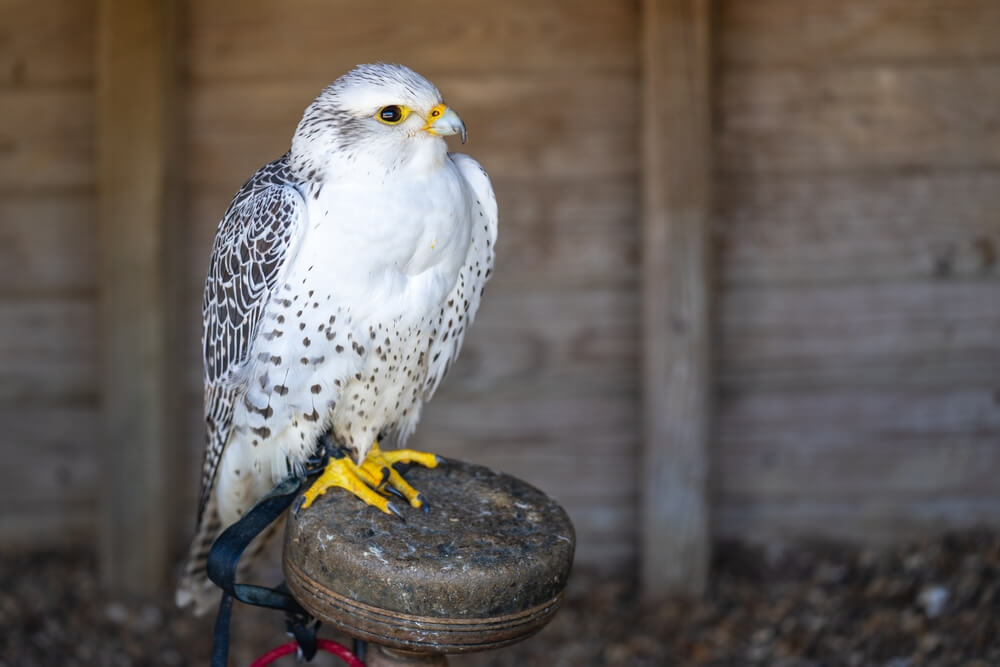
Length: 19-24 inches (48-61 cm)
Weight: 1lb 12oz – 2lb 15oz (805-1,350 grams)
Scientific name: Falco rusticolus
Gyrfalcons are the largest of all falcons – they can grow up to 24 inches in length and have a wingspan of about 50 inches. What’s important for us, however, is their plumage – it’s almost entirely white.
The base color of the entire body is white and it’s covered with small, black blotches to achieve perfect camouflage. The blotching is denser at the back.
In extreme cases, these white birds of prey can also be brown, but these specimens are exceptions to the rule.
Gyrfalcons use this coloring to hunt in their cold, mostly white habitats of Arctic islands and the tundra of northern North America and the surrounding islands, as well as the Siberian region in Europe.
2. Laughing Falcons
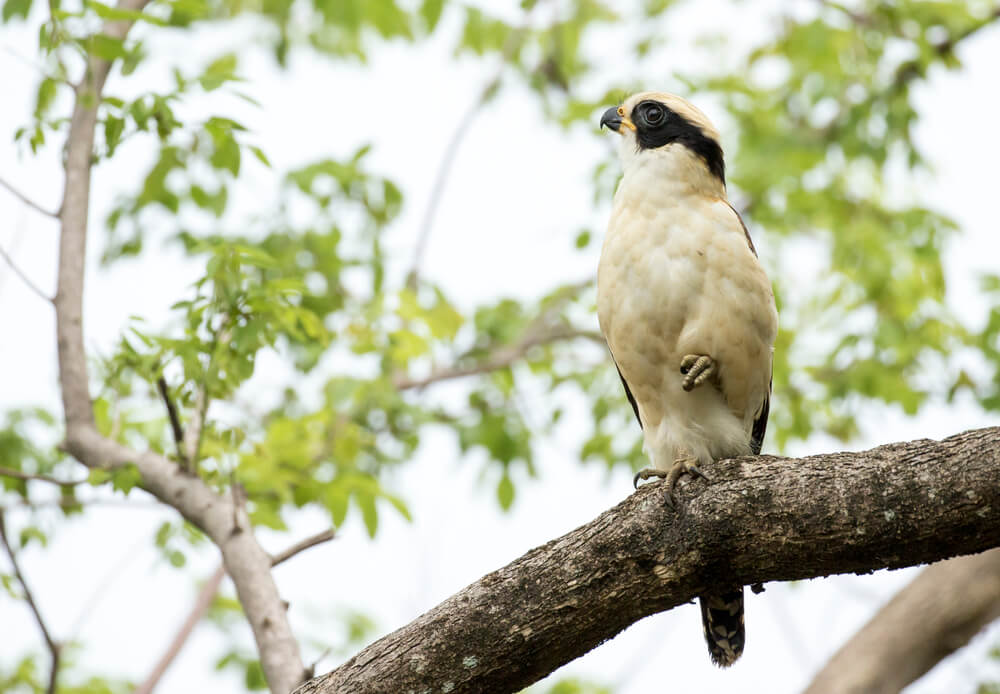
Length: 18-22 inches (46-56 cm)
Weight: 1.3-1.8 pounds (600-800 grams)
Scientific name: Herpetotheres cachinnans
Found in the northern half of South America and parts of Central America, laughing falcons are small white birds of prey once compared to the rest of the birds on this list.
They don’t grow past 22 inches or weigh more than 2 pounds. However, they’re absolutely astonishing up close.
The stomach, chest, and the top of the head are entirely white, while the cheeks and the wings are brown. The tail is striped with white and brown stripes, making the laughing falcon a truly unique bird.
They’re specialist snake eaters, often feeding on venomous snakes, but they also feed on lizards, rodents, and bats if an opportunity arises.
3. Gray Falcons
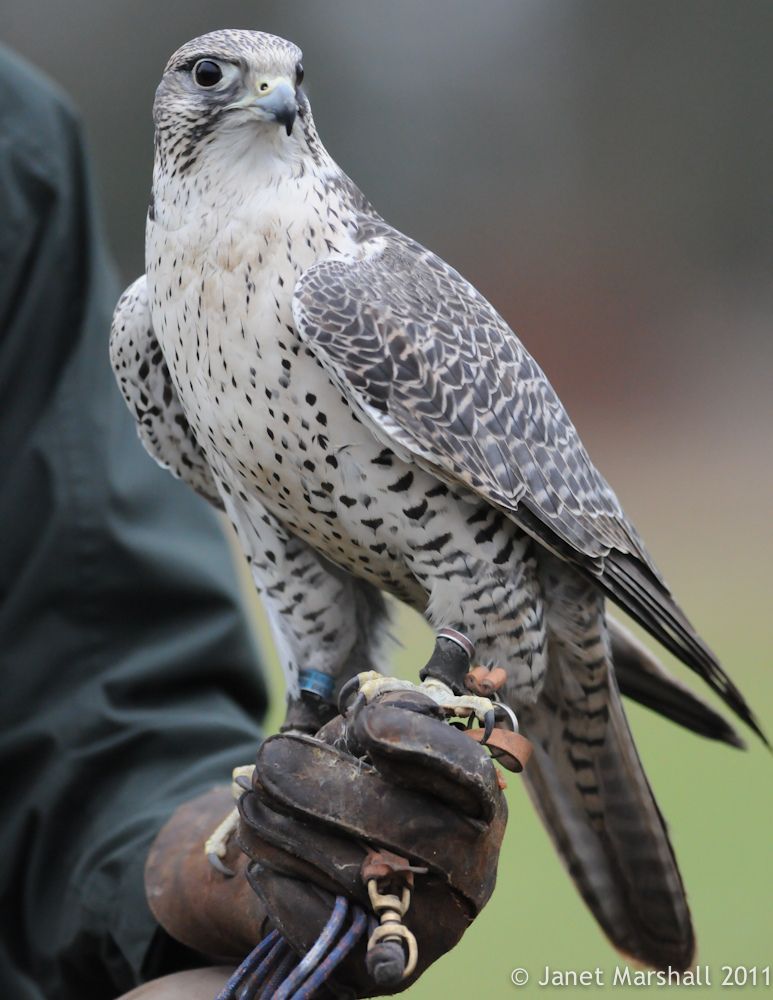
Scientific name: Falco hypoleucos
Gray falcons are some of the rarest falcons in the world and there’s much we don’t know about them. The chest, belly, and neck of this bird are entirely white, while the wings and back are gray. The beak and the feet are yellow.
They’re endemic to Australia and they’re usually found inland, rarely wandering out towards the coast. These white and gray birds of prey are most common in arid areas with open grasslands and woodlands.
Their white and gray plumage allows them to camouflage themselves on dry tree branches which, with time, become gray as well.
There, they observe their surroundings looking for food – usually other birds, small mammals, reptiles, and large insects.
4. Egyptian Vultures
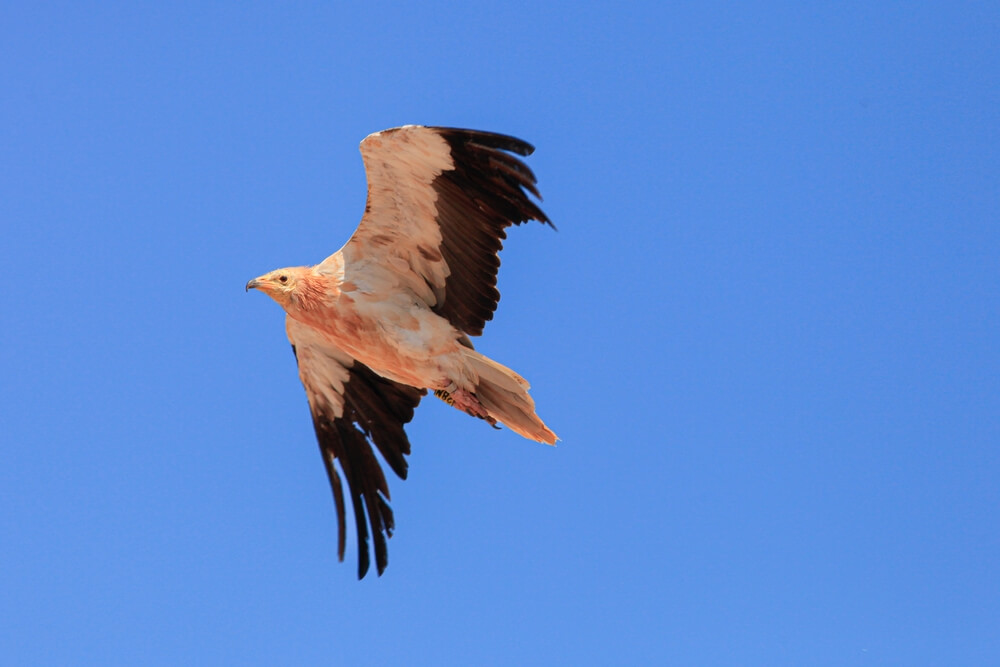
Length: 19-26 inches (47-65 centimeters)
Weight: 5.3 pounds on average (2.4 kg)
Scientific name: Neophron percnopterus
Egyptian vultures are big white birds of prey that are found in southern Europe, northern Africa, and parts of eastern and southern Asia.
Their plumage is characteristically white, with the only non-white part of the plumage being the upper side of their wing tips. The face isn’t covered with feathers and is entirely yellow.
Since they’re so white, their plumage is prone to getting dirty, usually with soil and blood, so they may appear brown at times. This isn’t their true color, though.
These vultures are fairly large birds, measuring up to 26 inches with a wingspan of up to 70 inches. They’re very intelligent birds, capable of using tools to break food open.
5. King Vultures
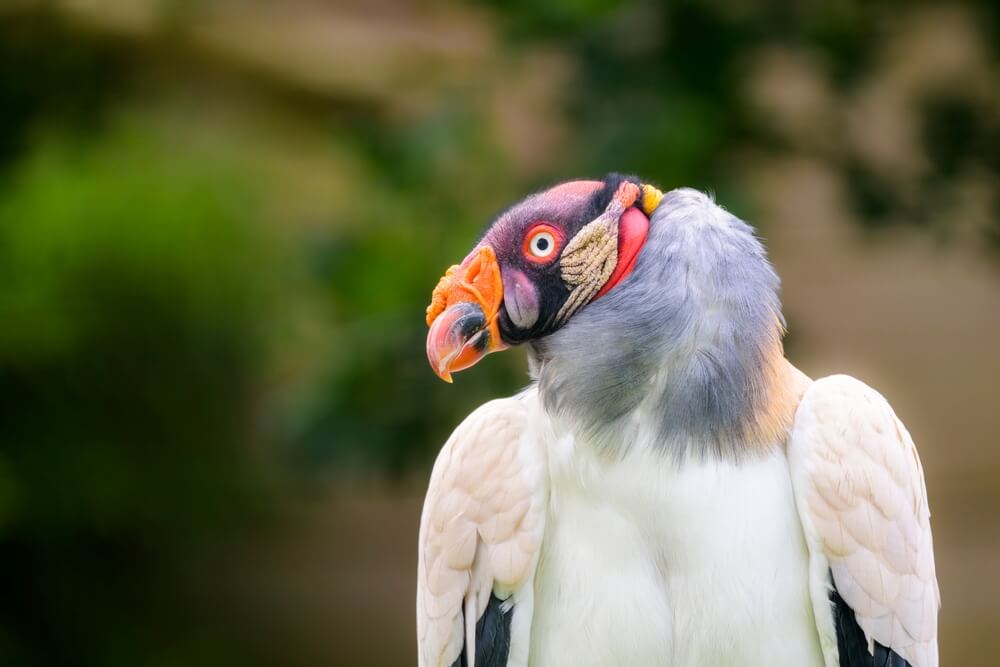
Length: 26-31 inches (67-81 cm)
Weight: 6-10 pounds (2.7-4.5 kg)
Scientific name: Sarcoramphus papa
Another white vulture species, the king vultures are found across South and Central America. They’re an absolutely massive species, reaching 32 inches in length and having a wingspan of 7 feet.
They’re mostly white, but the tips of the wings and the tail are black, while the head and neck (which don’t have any feathers) are red, purple, and orange. This makes the king vulture an easily recognizable bird.
Just like the Egyptian vulture, they lost all head feathers so animal guts and blood wouldn’t stick to them and cause an illness.
These black and white birds of prey are very strong and they’ll scare away other vultures from carrion to eat, which is why they’re called ‘king’ vultures.
6. Snowy Owls
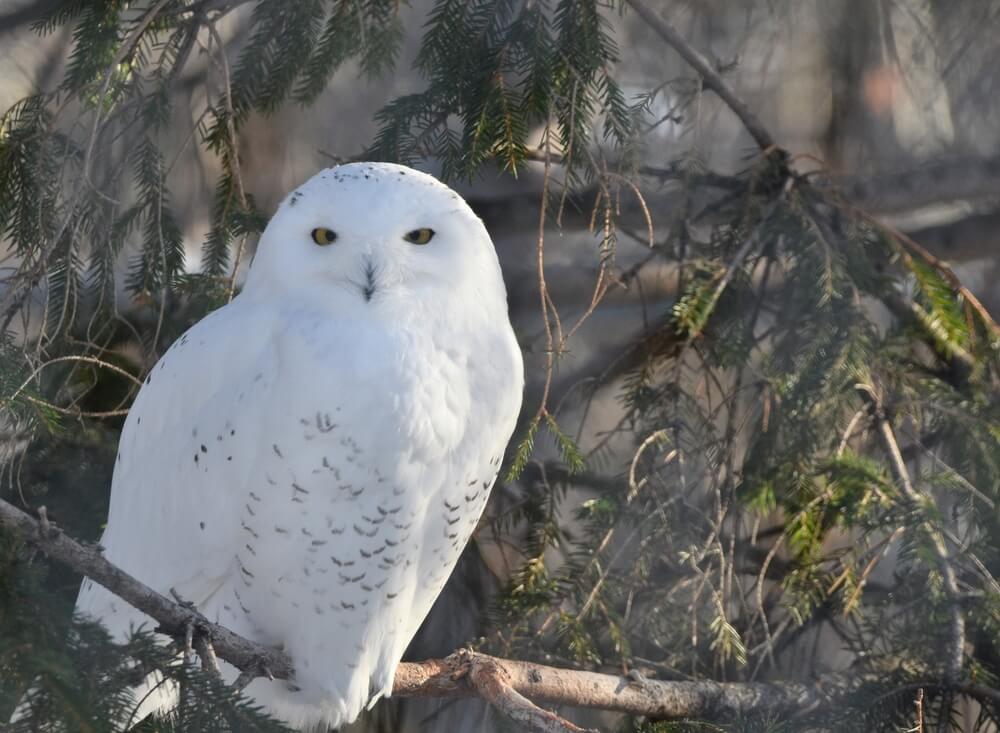
Length: up to 28 inches (71 cm)
Weight: up to 5.35 pounds (2.426 kg)
Scientific name: Bubo scandiacus
Also known as white owls or polar owls (or for all Harry Potter fans out there – Hedwig), these birds are found only in the extremely cold regions of North America, Europe, and Asia.
Since they live and hunt almost exclusively in snowy areas, they developed an entirely white plumage with some black blotching (to mimic shadows and irregularities of the snow’s surface) that camouflages them perfectly.
Since they’re whiter than polar bears, you can often pass one without realizing it’s there, mistaking it for a rock. Small mammals, which it feeds on, are no different – they don’t see the owl stalking them.
The snow-white birds of prey feed on birds and small mammals such as voles and lemmings.
7. Northern White-faced Owls
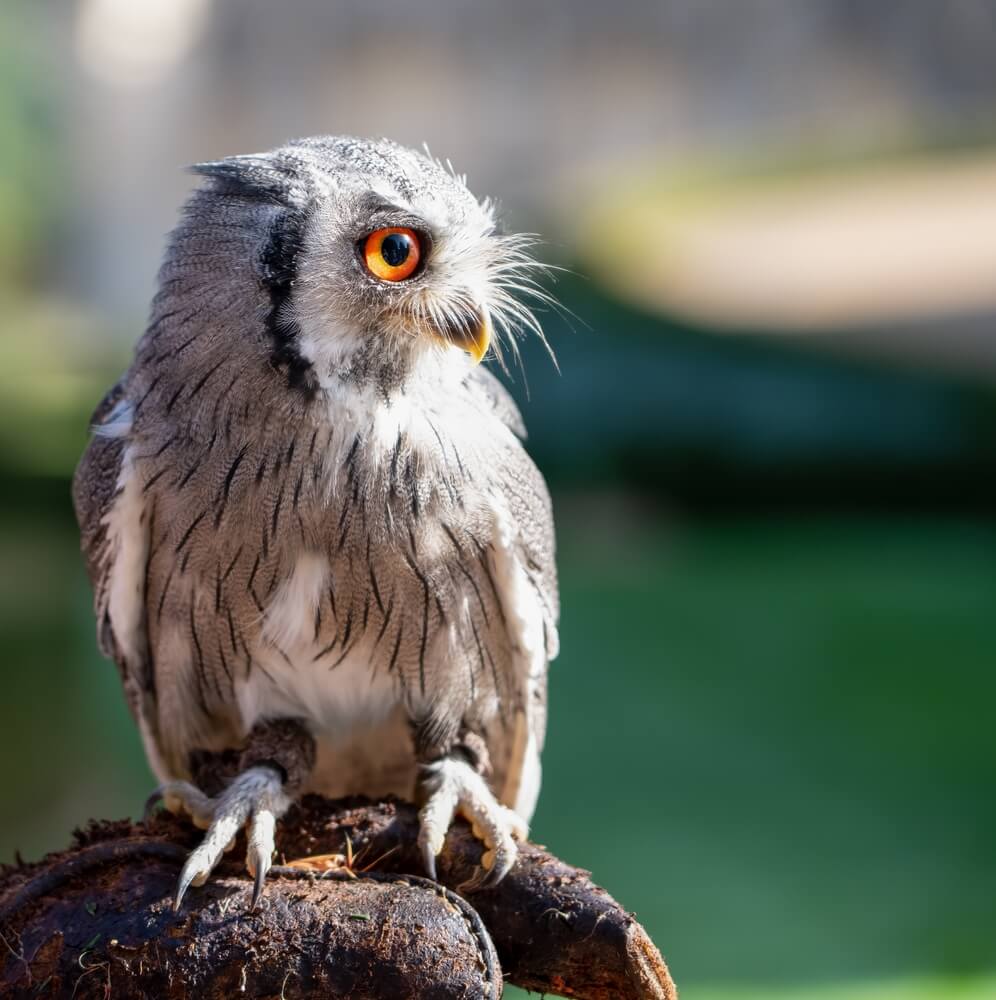
Length: 7-10 inches (17-25 cm)
Weight: 6-7 ounces (170-200 grams)
Scientific name: Ptilopsis leucotis
Found in Africa, the white-faced owl is white and gray in color, with characteristically red eyes. Its plumage is covered with short black stripes which provide camouflage in the trees.
Just like most owls, it’s nocturnal, using its camouflage to stay inconspicuous next to a tree trunk during the day. The white and gray combination makes them hardly noticeable near tree trunks of the same color.
It will hold its feathers very close to its body to appear smaller.
Since they’re small owls, they mostly feed on insects, small reptiles, and mammals, usually hunting them during the night.
8. Black and White Hawk-eagles

Length: 20-24 inches (51-61 cm)
Weight: about 30 ounces (850 grams)
Scientific name: Spizaetus melanoleucus
Located in central and northern South America, as well as parts of Argentina and Central America, black and white hawk eagles are, as the name suggests, entirely black and white.
The head, chest, and stomach of these white birds of prey are perfectly white, while the wings and the tail are black. Because of this characteristic coloring, it’s difficult to mistake them for any other bird in the range.
They’re hawk-eagles, meaning that they’re eagles with the build of a hawk: light, with a large beak and feathers on legs and feet.
In the wild, they can be found in lowland forests, usually staying away from arid and humid areas.
9. White-bellied Sea Eagles
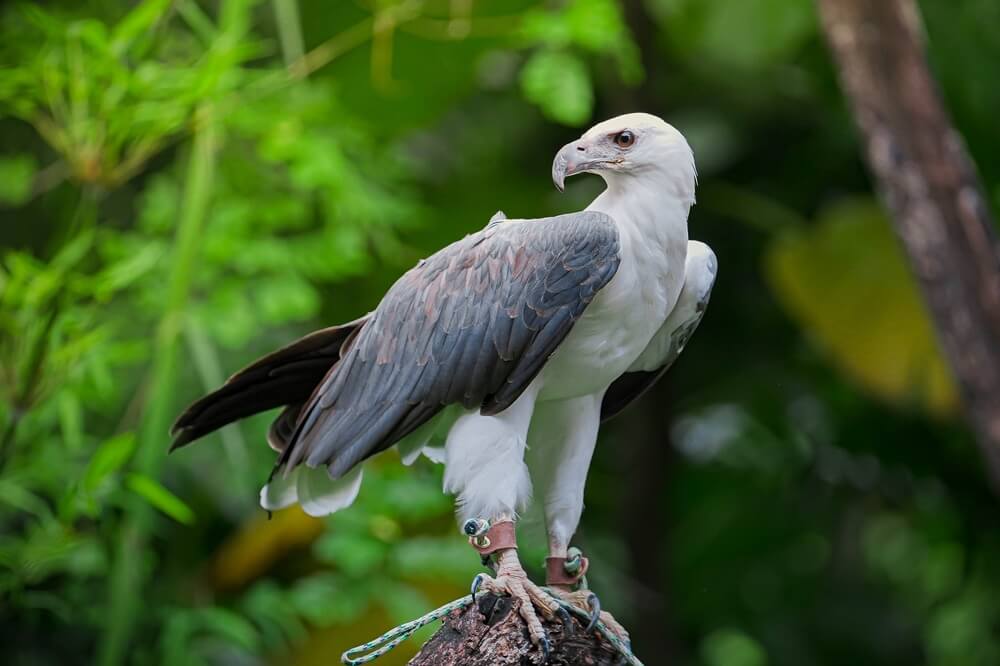
Length: up to 35 inches (90 cm)
Weight: 5.5-9.9 pounds (2.5-4.5 kg)
Scientific name: Haliaeetus leucogaster
These majestic birds can be found anywhere from the coastline of southern India to the coast of southeastern Australia. They’re unmistakable for any other bird.
Not only are they very large, with a wingspan of up to 7 feet, but they’re characteristically colored, very similar to black and white hawk-eagles (although they don’t share the same territory).
White-bellied sea eagles have a white head (with a black beak), neck, chest, and stomach, while the underside of the wings is half-black and half-white. The upper side of the wings is entirely black and the tail is split between black and white.
These pale birds of prey mostly feed on fish, snakes, turtles, small crocodiles, and carrion.
10. Gray Goshawk

Length: 16-22 inches (40-55 cm)
Weight: about 1.59 pounds (720 grams)
Scientific name: Accipiter novaehollandiae
A truly unique bird, the gray goshawk is almost entirely white.
The chest and stomach are white, while the wings and back are usually a light-gray color. However, the backs and wings of some specimens are only a slightly darker shade of white, making the entire bird white.
In some cases, the gray goshawk is oddly reminiscent of a pigeon (ignoring the sharp claws and the obvious size difference).
They’re found in eastern and northern Australia and Tasmania, where they regularly reach sizes of 22 inches, developing a wingspan of up to 43 inches. There, these bleached birds of prey feed on small mammals, reptiles, and other birds.
11. Northern Goshawk
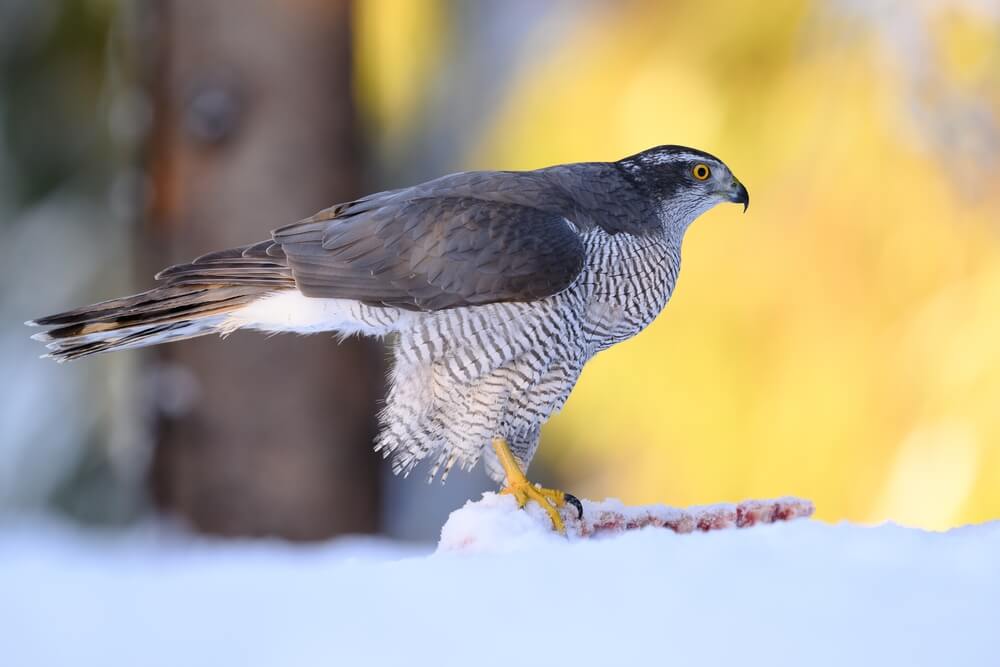
Length: up to 27 inches (69 cm)
Weight: about 2.54 pounds (1,150 grams)
Scientific name: Accipiter gentilis
Similar in description to the gray goshawk, the northern goshawk is predominantly white with gray wings, tail, and head. In some cases, the gray can be substituted with black or brown, but gray remains the nominal color.
They’re found all over the northern hemisphere, from North America’s West Coast, through Europe, all the way to Japan. There, they inhabit forests in which they’re master hunters.
They evolved short wings and a long tail to grant them agility, allowing them tight turns in dense vegetation. They mostly feed on birds and mammals, sometimes feeding on reptiles and amphibians.
12. Gray-lined Hawks
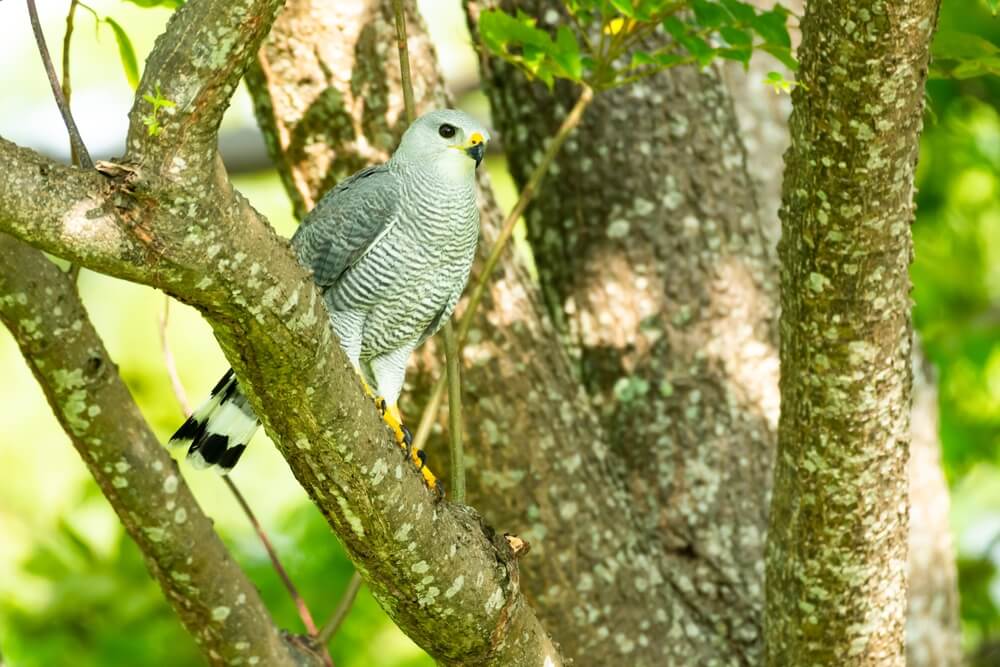
Length: 18-24 inches (46-61 cm)
Weight: about 16.8 ounces (475 grams)
Scientific name: Buteo nitidus
These small white birds of prey are found all over South America and parts of Central America, where it usually grows to about 24 inches in length. The body of the gray-lined hawk is pale with gray and white lines, as the name suggests.
The only non-white parts of the body are the yellow legs and the black tail, while juveniles are much darker until they mature and develop the characteristic white and gray coloring.
In the wild, they mostly feed on lizards and snakes, while other birds are also on the menu. They look for prey from a high vantage point before swooping down to catch it.
13. Gray Hawks
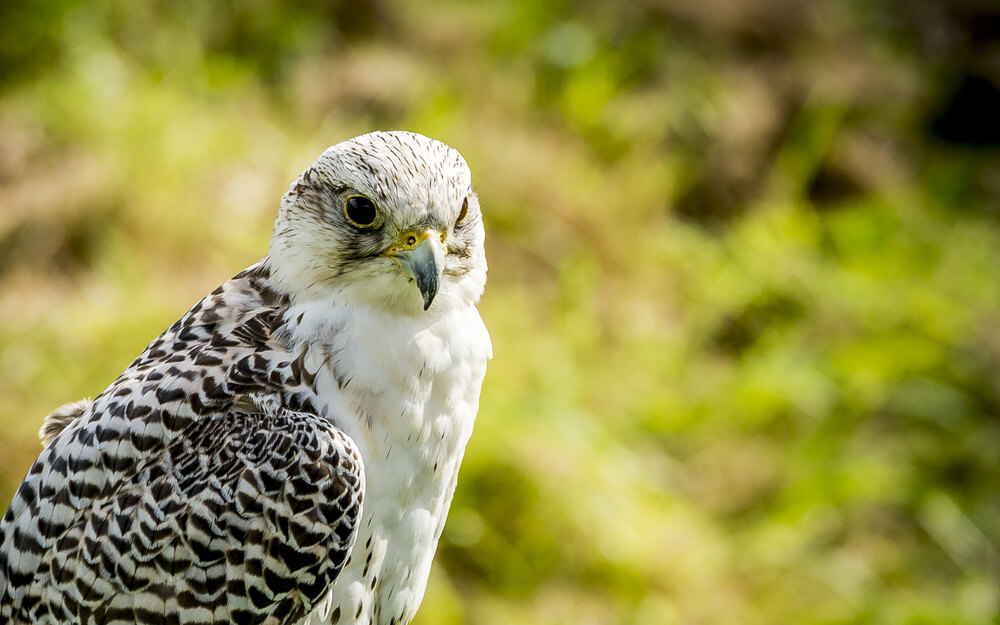
Length: 18-24 inches (46-61 cm)
Weight: about 16.8 ounces (475 grams)
Scientific name: Buteo plagiatus
Also known as the Mexican goshawk, these birds of prey are almost entirely gray, sometimes white. The black tail is the only part of the body that isn’t gray or white.
They’re somewhat similar to gray-lined hawks as they have stripes on the underside of their bodies, but the lines aren’t as apparent as they are with gray-lined hawks.
They can only be found in Central America and Mexico, while only a few sightings were reported in the southernmost parts of the United States.
There, these gray and white birds of prey feed mostly on reptiles and small mammals, while they stick to forest edges and open areas as preferable habitats.
14. Mississippi Kites
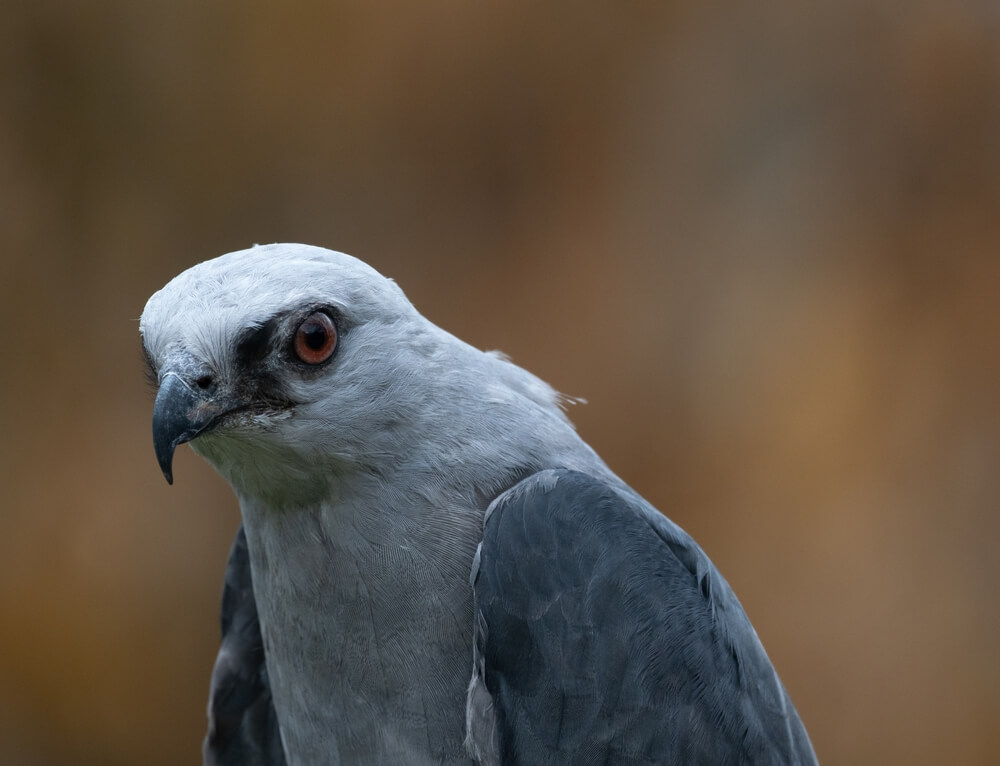
Length: 12-15 inches (30-37 cm)
Weight: 7.6-13.7 ounces (214-388 grams)
Scientific name: Ictinia mississippiensis
While they breed in the Central and southern United States, they can also be found in Mexico, Central America, and parts of northern and central South America.
Although some specimens develop a darker plumage, most Mississippi kites are gray and white, with the wings generally being darker than the rest of the body.
Males and females are similar and there’s usually no difference in size, but females are known to be darker.
These kites are small, barely reaching 15 inches in size and weighing less than a pound. They mostly feed on large insects and small reptiles.
Because of their insect-killing activities, they’re considered beneficial animals for farmers.
15. White-necked Hawks

Scientific name: Buteogallus lacernulatus
A characteristically white bird, the white-necked hawk is a vulnerable species found exclusively in southeastern Brazil. The head is completely white, just like the chest and the stomach, but the tail and the wings are entirely black.
Aside from its description, very little is known about these pale birds of prey. They most likely feed on arthropods and small reptiles, mammals, and amphibians.
They’re sedentary birds, only migrating if they have to escape danger.
16. White Hawks
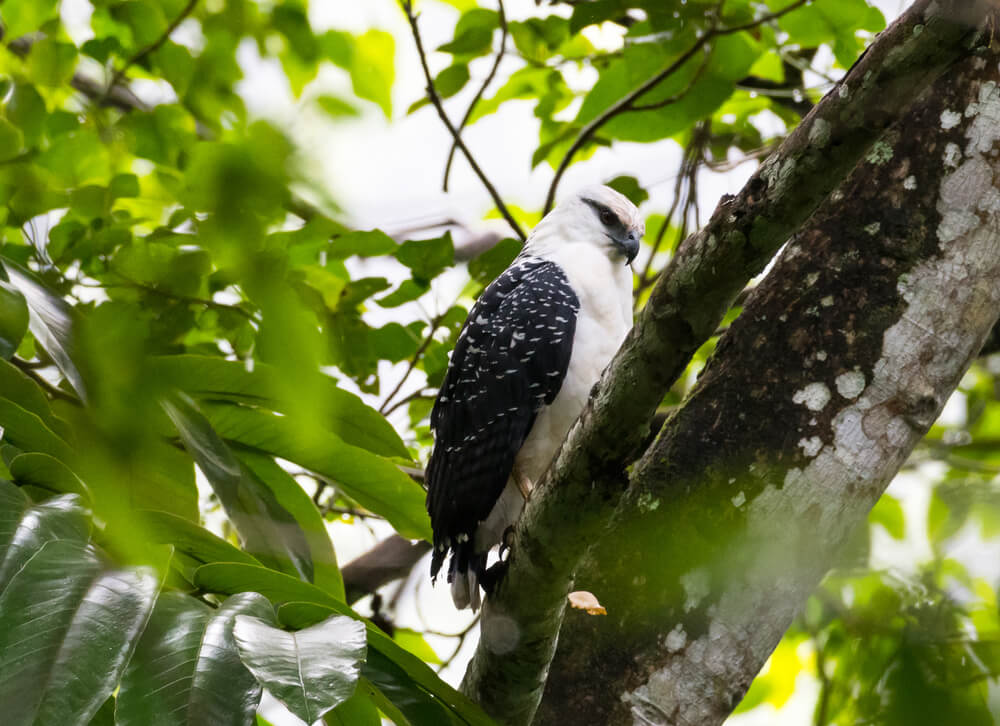
Length: 18-22 inches (46-56 cm)
Weight: 1.43-1.85 pounds (650-840 grams)
Scientific name: Pseudastur albicollis
The white hawk is the whitest bird of prey after the snow owl – this hawk is entirely white, with the only exceptions being its black beak and the few black lines on the tail and the wings.
Adults grow up to 22 inches and are very easy to recognize because of their size and coloring. They can be found anywhere from Mexico to Central Brazil.
There, they mostly feed on lizards and snakes (including venomous snakes), while amphibians, insects, and mammals are eaten more rarely.
Since they’re almost entirely white from below, they can be very difficult to spot for an animal looking towards the sky, especially if the day is particularly cloudy.
17. Mantled Hawks
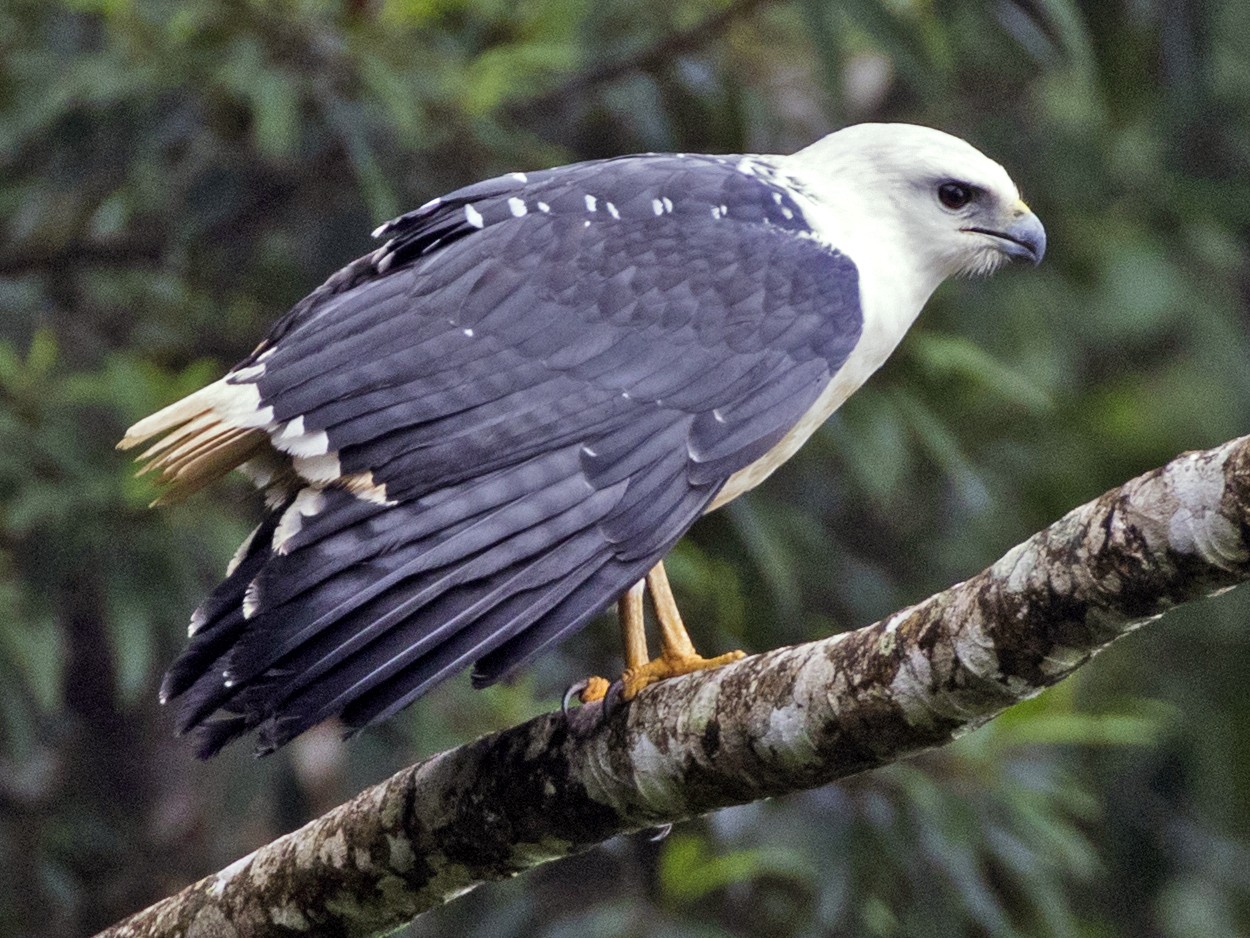
Scientific name: Pseudastur polionotus
Indigenous to the southeastern coast of Brazil, the mantled hawk is similar to the white-necked hawk in some ways. The head and the underside of the body are entirely white, with only the wings and back being black.
They use their camouflage for hunting – they soar at a great height while looking for prey. Their white wings provide camouflage up against the sky, keeping them from being spotted.
However, they’re fairly easy to spot if perched on an exposed branch. They mostly feed on smaller birds, while reptiles, rodents, and amphibians are secondary food.
To Sum Up
Snowy owls are without a doubt the most white birds of prey – their white plumage provides them with perfect camouflage for the habitat in which they hunt.
Birds of prey that don’t live in snowy areas use their white coloring to keep from being seen from below when they’re soaring through the air, looking for prey.
Some animals, such as the northern white-faced owl, will use its coloring to stay hidden when perched up on a tree as dry tree trunks lose their color and become gray or white.

